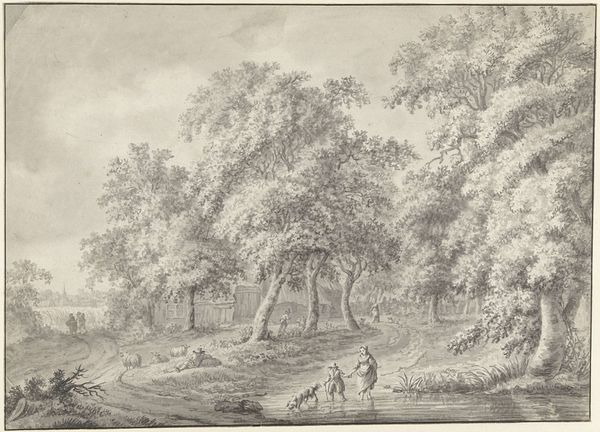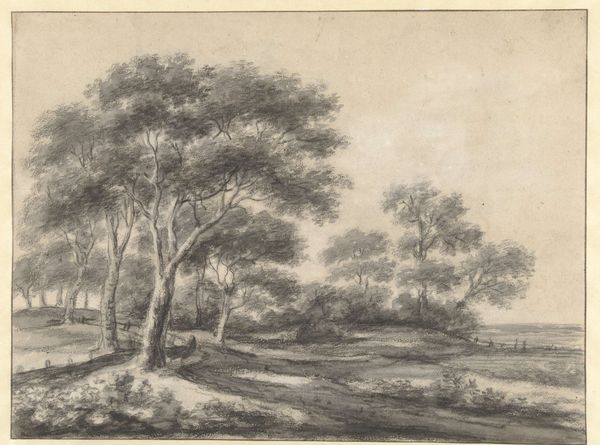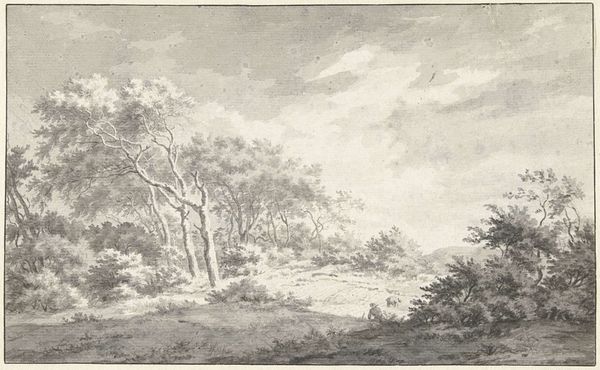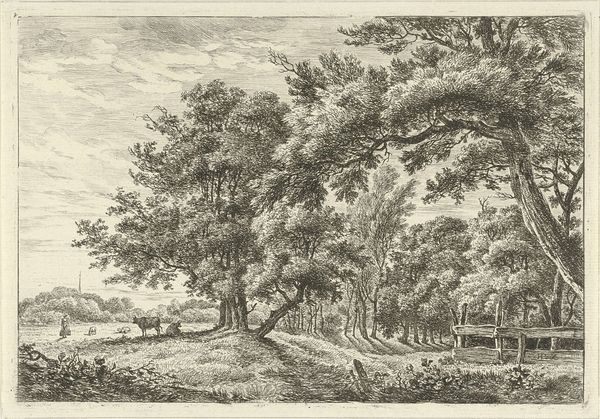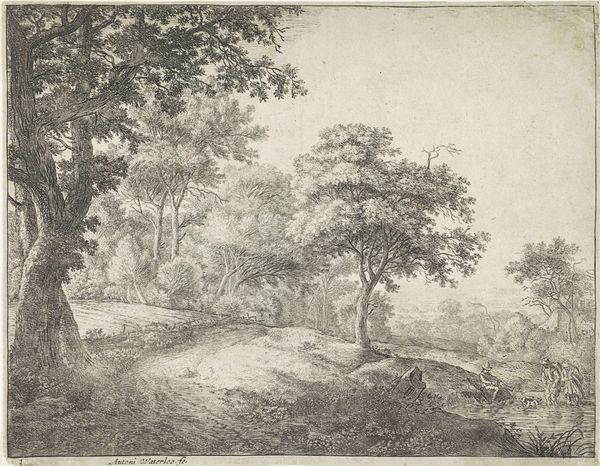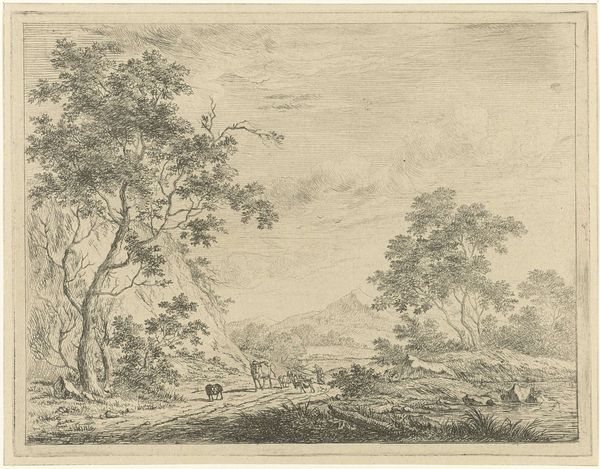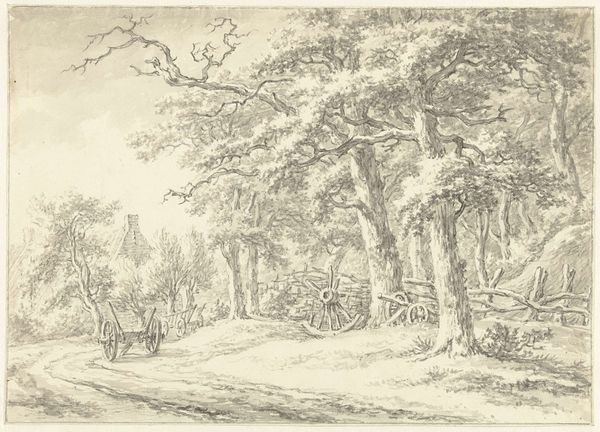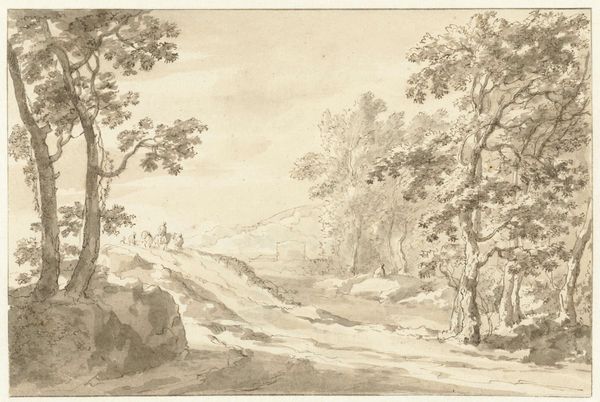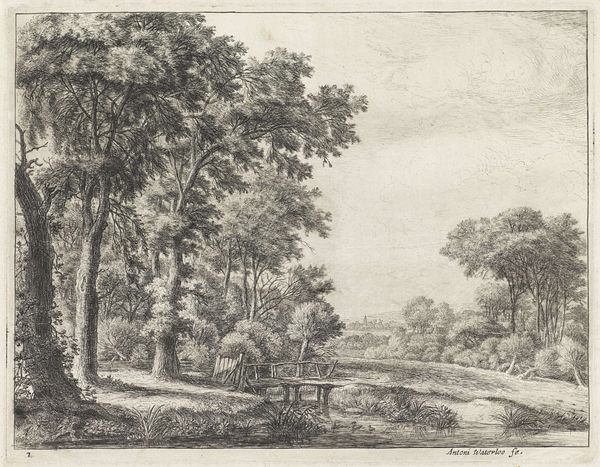
drawing, ink, pencil
#
drawing
#
neoclacissism
#
landscape
#
ink
#
pencil
Dimensions: height 233 mm, width 373 mm
Copyright: Rijks Museum: Open Domain
Editor: Here we have Egbert van Drielst’s “Boerderijen te Eext (Drenthe),” a drawing made in 1772 with ink and pencil. There's a tranquility to this landscape scene; the thatched roofs and dense trees feel almost like a sanctuary. What do you see in this piece? Curator: The focus on materials here is telling. The use of readily available, inexpensive materials like ink and pencil speaks volumes about artistic production at the time. It moves away from grand oil paintings towards something more accessible, more aligned with the everyday experience. How does the choice of drawing, rather than painting, impact our understanding of landscape art and its intended audience in the late 18th century? Editor: That's an interesting point. So, the accessibility of the materials suggests a democratization of art, perhaps? Were these sketches for something grander, or were they valued as artworks in themselves? Curator: That’s the question, isn't it? Were drawings simply preliminary sketches, the base labor upon which masterpieces are produced, or does their existence challenge those strict boundaries between finished art and craft? Also, the labor invested, all of this fine detail achieved with simple tools…it speaks to a different relationship with artistic practice, one perhaps more intimately tied to observation and immediate recording of the landscape, rather than idealization, aligned with neoclassicism.. Editor: So, looking at it through the lens of labor and materiality gives a fresh perspective on its historical value. I see it now. Thanks! Curator: Indeed. Thinking about how it was made gives insights beyond aesthetics and provides a perspective that shifts our interpretation.
Comments
No comments
Be the first to comment and join the conversation on the ultimate creative platform.


